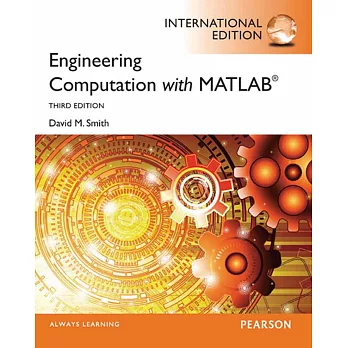This textbook is ideal for MATLAB/Introduction to Programming courses in both Engineering and Computer Science departments.
Engineering Computation with MATLAB introduces the power of computing to engineering students who have no programming experience. The book places the fundamental tenets of computer programming into the context of MATLAB, employing hands-on exercises, examples from the engineering industry, and a variety of core tools to increase programming proficiency and capability. With this knowledge, students are prepared to adapt learned concepts to other programming languages.
本書特色
1. Engineering Examples are interspersed in the chapters, providing robust examples that extend chapter concepts into practice, such as the fundamental principles used to implement vehicle navigation systems.
2. Do It Yourself Exercise boxes allow readers to master concepts by trying what they just learned. Exercises follow each new topic for immediate reinforcement.
3. Style Points clearly advise readers about writing quality code that is easy to understand, debug, and reuse.
4. Hints enrich understanding of a topic by providing a little extra “aside” in places where readers may benefit from it.
5. Common Pitfall boxes alert readers to common mistakes that programmers make, and clearly explain how to avoid them.
6. End-of-chapter material—including a chapter summary, true-or-false question and answers, fill-in-the-blanks and answers, and a variety of large-scale programming projects—helps readers assess their understanding.
7. A freely accessible Companion Website, featuring:
- Two additional appendices: Web reference materials and solutions to selected programming projects
- Source code
- Bonus chapters



 天天爆殺
天天爆殺  今日66折
今日66折 






















![幼兒園教保活動課程:幼兒學習評量手冊[113年03月初版9刷]](https://im1.book.com.tw/image/getImage?i=https://www.books.com.tw/img/001/098/43/0010984394.jpg&v=65eae924k&w=110&h=110)
![標準機械設計圖表便覽 [最新增訂五版]](https://im2.book.com.tw/image/getImage?i=https://www.books.com.tw/img/001/054/44/0010544415.jpg&v=4f9e6dbfk&w=110&h=110)
 博客來
博客來 博客來
博客來 博客來
博客來 博客來
博客來 博客來
博客來